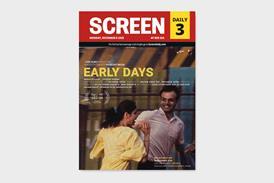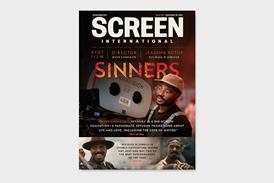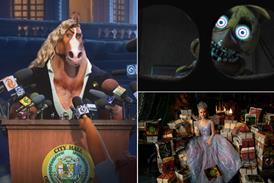Speaking in Cannes, where XPAND 3D signed a new three year contract renewing its role as the technical partner, company CEO Maria Costeira, considers some of the main challenges facing the 3D market.
Also in Cannes, XPAND launches its new YOUniversal 3D glasses for home and cinema.
How much of the turnover of XPAND 3D is down to cinema? Given the many other fields in which you’re active, is cinema a core part of the company?
In terms of volume of units, it (cinema) is still a very significant part. We manufacture over a million units for cinemas worldwide in terms of pairs of glasses and systems. We have 6000 installations worldwide. That is growing, mainly due to China, India, South America (especially Brazil and Argentina) and Russia and Turkey. The volume of cinema is significant but it’s not the biggest field of the company.
If cinema isn’t driving 3D, what is?
It’s definitely home entertainment in the sense that there are so many TVs and laptops worldwide. For instance, we manufacture for HP. You just have to think that Hewlett Packard is the biggest manufacturer of laptops in the world. We have a computer we specifically design for them called the Envy. That came out 18 months ago, the first series. We manufacture for Phillips. If every single TV that goes out gets shipped with two pairs of glasses, you just have to multiply that. We do JVC, Mitsubishi and Toshiba. We do product design for the majority of consumer electronic brands in the world. XPAND is not a glasses company. Glasses is a means to an end. We have auto-stereoscopic devices, we have passive devices, we have medical devices that have nothing to do with 3D medical.
Do you think that exhibitors are justified in the surcharge they put on tickets for 3D films?
There are markets where that upcharge is becoming unreasonable. I think the US specifically has been a little bit too aggressive, and Mexico, even greater than the US. You also have to give quality. If you want to charge more for something, first the story has to be good. I think to a certain extent that has been the problem. We’ve had a lot of good movies but we have a lot of not so good movies. People get upset when they pay a lot. That doesn’t mean it is only 3D. People also get upset about that on 2D as well. The last part is if the quality of the technology, the quality they have on screen, is really not good then you really have a problem. Then you really feel ripped off. If the image is so dark you can hardly see what is going on, that is the biggest problem with 3D. It has nothing to do with technology. It has to do with lamp usage on the projector. The majority of problems with the 3D image you see on screen come from the over usage of lamp of the projector. 3D is all about light. If you have an over-burned lamp that has run more hours than it should, we can’t do miracles.
Are the exhibitors being forced to charge more than they would like?
3D became a profit centre.The exhibitors made a big investment in all of this equipment. A lot of them got no subsidies from the studios. The only people actually making money out of this are the studios. To launch a digital movie these days for the exhibitors is a very expensive process. The only place the exhibitors can make some money is selling glasses, which is the RealD business model that the studios incentivized. I am in total disagreement with this because we are not in the glasses business. The cinemas are not a glasses business. We show movies, we sell popcorn, we sell drinks. But 3D should not be about selling glasses. 3D should be about watching a movie. That’s why the box-office prices keeping going up and it’s not always that the patrons who get the best experience possible. I certainly think in some markets you are going to see that going down. In markets like Germany for instance there is almost an equalisation about 2D and 3D movies. I do believe that 3D at this point should still have a little upcharge. I just don’t think it should be greater than 10 or 15%.
In some markets, it is much more.
It can be as much as 50%…but don’t get me wrong, the only reason these markets, which have no VPFs (virtual print fees), went digital was because they could do 3D. If they had to pay for all this equipment, they have to get this money back from somewhere. The 35mm projector lasts 20 years and no one cares which lamp is on it. Now, they have to buy digital projectors that cost 15K, you put another 20K for a digital server and all these other things - and you’ve spent $100,000. You’ve got to get it back. That’s why the glasses become a business. And 3D has nothing to do with glasses.
Some people have suggested that 3D was used as a Trojan horse to persuade exhibitors to move to digital. Is there any truth in that?
Oh yeah. The only reason an exhibitor was going to buy a digital projector was to showcase 3D. There is no gain even today for an exhibitor to pass a digital print. I am an exhibitor as well. It only costs us more money. I don’t question that the image is better. You need a different type of projectionist. The projector isn’t going to last 20 years. The investment in lamps is more…I love technology. I am completely a tech addict. But it (digital) is not as bullet proof as turn the power on, do the threading on a 35mm (projector) and plug it in. Does the patron deserve that kind of quality? Certainly. In some markets, at the beginning of digitalisation, the exhibitors were charging 50c for people to watch on a digital print. I think that’s a reasonable figure. It’s an upgrade of quality. The costs are higher. What I do think is that there should have been more incentives from the studio standpoint towards the exhibitors on film rental for that digitalisation.
Have you seen anything of The Great Gatsby? Do you think a film like that will work in 3D?
The Great Gatsby, if you think about those scenes in the gardens and the fireworks, will look amazing in 3D. It going to have that feeling of you being close to the movie. When we left Avatar, we were talking about how 3D looked amazing in that movie. I think when we leave the Great Gatsby by saying what an amazing story. I think 3D is going to enhance that.
Is 2012 going to be a good year for 3D?
I think this year is going to be a good year. There are good movies. That’s not one Avatar but there is a serious line-up of solid movies. You will have a constant array of movies coming out during the summer months and over Christmas. I think that is going to sustain the growth of this box-office. Simultaneously, you have very good gaming. Gaming is the driver of all technology. Nobody likes to talk video gaming because (they think) it’s so kid driven. It’s not. Gaming is all about adults. Video games are going to drive a lot of the movies we are going to see at the box-office. TV business is back on track. In Japan and Korea, all displays being sold are 3D ready. That means you have a wide range of windows where you can be showing product. There are more 3D channels. Apple is coming in to 3D, YouTube is coming into 3D.
























No comments yet